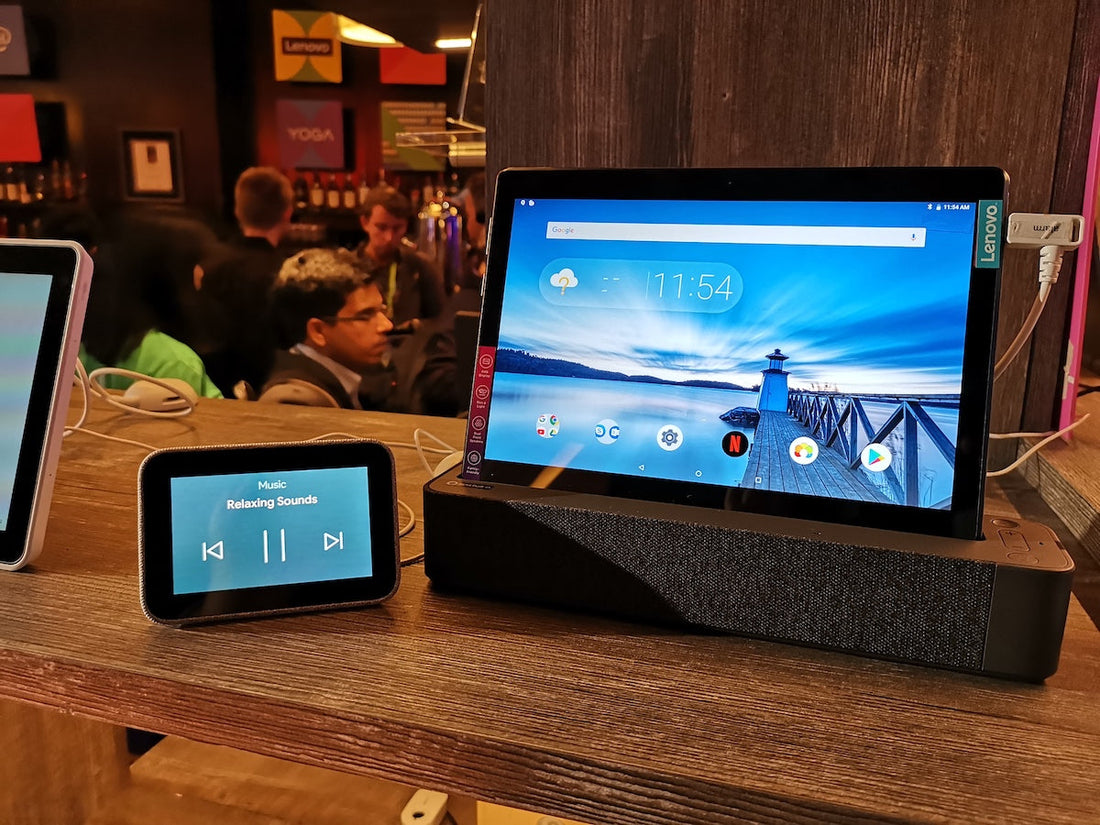
Shaping the Future: Top 5 Trends in the Smart Display Industry
Share

The smart display market is revolutionizing how technology integrates into our lives. This sector, a dynamic segment of the semiconductor and electronics industry, is driven by the demand for interactive, AI-powered, and IoT-connected devices. Spanning diverse applications such as healthcare, automotive, education, and residential use, smart displays represent the next frontier in consumer and industrial technology.
As the market evolves, here are the top five trends redefining the smart display landscape and why this is the right time for investors to take note.
1. Integration of AI and Voice Assistants
Artificial intelligence (AI) and voice assistants like Amazon Alexa, Google Assistant, and Apple Siri are the backbone of smart displays' user experience. These technologies enable intuitive voice commands, streamline smart home management, and deliver personalized recommendations.
For instance, the Lenovo Smart Display, powered by Google Assistant, merges AI with functionality, offering a seamless interface for maps, calendars, YouTube, and more. This trend not only enhances usability but also strengthens consumer loyalty.
Investor Takeaway: With AI becoming indispensable in smart devices, investing in companies that excel in AI-driven solutions can secure a strong foothold in this burgeoning market.
2. Healthcare and Telemedicine Applications
Smart displays are transforming healthcare by facilitating telehealth consultations, remote patient monitoring, and efficient data management. These devices enable virtual connections between patients and medical professionals, especially critical during the COVID-19 pandemic.
Samsung’s launch of its 4K QLED Smart Healthcare TV in collaboration with ShareSafe exemplifies this shift. By enhancing patient engagement and care coordination, such innovations demonstrate the potential of smart displays in delivering superior healthcare experiences.
Investor Takeaway: The integration of smart displays in healthcare is not just a trend but a necessity. Investing in healthcare-focused technology solutions promises long-term growth in an ever-expanding market.
3. Gesture and Touchless Controls
The advent of gesture-based and touchless controls offers a hygienic, hands-free interaction model. These innovations cater to both practical and leisure applications, from operating displays in public spaces to creating immersive gaming experiences.
Google’s Nest Hub series, capable of recognizing simple hand gestures, highlights the growing significance of this technology. As consumers seek more intuitive and accessible interfaces, touchless controls are poised to become a standard feature.
Investor Takeaway: Companies developing advanced gesture recognition and touchless interfaces represent an opportunity for early-stage investments in a technology that enhances user convenience.
4. Laser-Based Display Technology
Laser-based displays offer exceptional brightness, color precision, and energy efficiency, making them ideal for diverse applications such as home theaters, outdoor signage, and augmented reality.
Leading the charge, Hisense introduced its 120-inch 4K smart laser TV, showcasing the scalability and durability of this technology. These attributes align perfectly with sustainability goals, ensuring reduced maintenance costs and longer product lifespans.
Investor Takeaway: Laser technology represents a high-growth segment in the smart display market, providing investors with opportunities to back environmentally friendly, cutting-edge solutions.
5. Integration in Automotive Applications
Smart displays are redefining automotive experiences by integrating infotainment, navigation, and IoT connectivity. These displays enhance driving safety, reduce travel time with real-time traffic updates, and offer seamless connectivity to devices.
BMW’s partnership with Samsung to develop an OLED display for MINI vehicles exemplifies how automotive applications are leveraging smart displays to deliver advanced features. This innovation positions displays as integral to modern vehicles.
Investor Takeaway: As automakers increasingly integrate smart displays, investing in technologies that cater to the automotive sector can yield significant returns.
A Promising Market on the Rise
According to Next Move Strategy Consulting, the global smart display market, valued at $12.71 billion in 2022, is projected to reach $48.02 billion by 2030, with a remarkable CAGR of 16.5%. However, geopolitical challenges, such as the Russia-Ukraine crisis, have disrupted supply chains, impacting production costs. Despite these hurdles, the market’s growth trajectory underscores its resilience and potential.
Conclusion
The smart display market is at the forefront of technological innovation, driving changes in how we interact with devices, access healthcare, automate homes, and enhance our vehicles. From AI integration to advancements in laser technology, the industry is primed for exponential growth.
For investors, this is an unparalleled opportunity to engage with a transformative market that promises to shape the future of connectivity and intelligent technology. The time to act is now—invest in the smart display revolution.